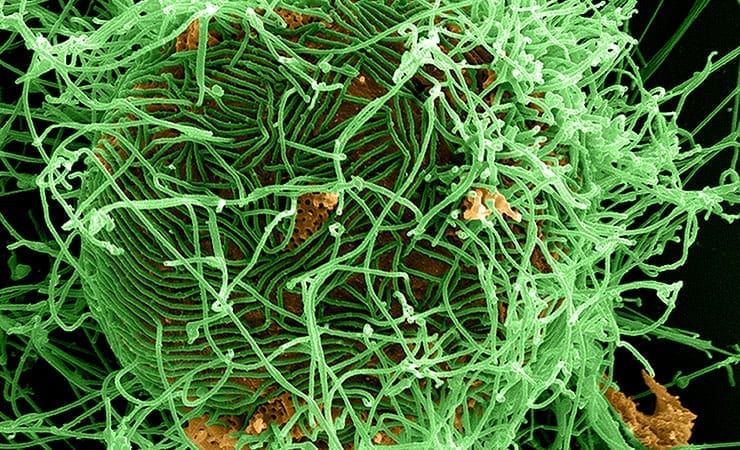Scientists studying the genetic makeup of the Ebola virus currently circulating in West Africa have identified several mutations that could have implications for developing effective drugs to fight the virus.
Their findings, published in mBio, the online open-access journal of the American Society for Microbiology, identified changes in the current West African outbreak strain that could potentially interfere with experimental, sequence-based therapeutics.
Researchers from the U.S. Army Medical Research Institute of Infectious Diseases (USAMRIID), working with investigators from Harvard University and the Massachusetts Institute of Technology, have evaluated three types of genetic sequence-based treatments during the current outbreak: monoclonal antibody, small-interfering RNA (siRNA), and phosphorodiamidate morpholino oligomer (PMO) drugs.
All three countermeasures were developed using Ebola virus strains from two smaller outbreaks that occurred in 1976 and 1995.
“We wanted to highlight an area where genomic drift, the natural process of evolution on this RNA virus genome, could affect the development of therapeutic countermeasures,” says Gustavo Palacios, senior author of the study and director of the Center for Genome Sciences at USAMRIID.
The team compared the current strain, called EBOV/Mak, with the two previous strains that caused outbreaks in 1976 and 1995 in Zaire (now the Democratic Republic of the Congo). In each comparison, they found more than 600 genetic mutations.
Next, the group focused on only the mutations that occurred in the genetic sequences targeted by the experimental therapeutics. Of these, they found 10 new mutations that might interfere with the mechanisms of the sequence-based drugs currently being tested. Three of these mutations appeared during the current West African outbreak.
The researchers say genetic drift must be considered when developing potential therapeutics, in order to ensure that changes in the Ebola virus over time do not render those treatments ineffective.
“Based on our findings, the virus has changed and is continuing to change,” said CPT Jeffrey Kugelman, Ph.D., the paper’s first author. Kugelman is currently in Charlesville, Liberia at the Liberian Institute for Biomedical Research, working with the local government to set up onsite genomics sequencing of Ebola patient samples to get a real-time picture of how the virus changes as it is transmitted from human to human.
His work will be critical to analyzing changes in the virus’s genetic sequences over time and determining how those changes may affect future diagnostic tests and drug treatments.
Read the paper at mBio: Evaluation of the potential impact of Ebola virus genomic drift on the efficacy of sequence-based candidate therapeutics.


